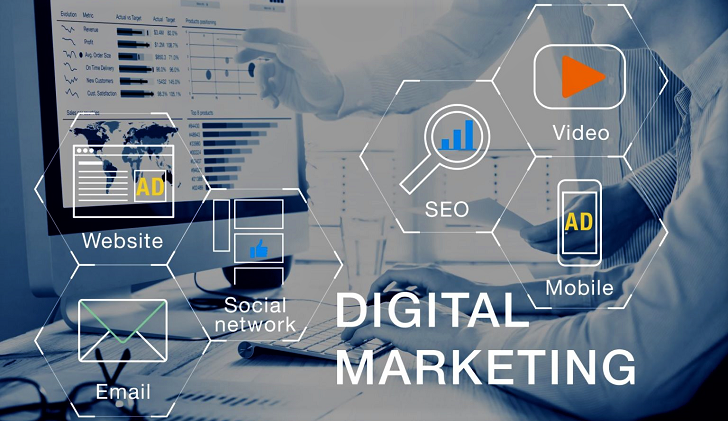
To compete in the marketplace and stay ahead of the competition, companies must foster an environment of innovation based on collaboration. New products keep current audience members engaged, attract new customers, and help establish companies as leaders in their field. Working together to develop new ideas builds morale and leads to corporate success. Approximately 78% of managers who make collaboration a priority in their company see low product failure rates.
Launching a new healthcare product is big news for your business and the community at large. The key is to spread the word with an effective public relations strategy so people know about it. In today’s world of digital marketing, there are more ways than ever to reach a broad target audience and promote the launch of your new product. PR for a healthcare product launch is relatively easy, highly effective, and completely necessary.
Why is PR Especially Important for Healthcare Suppliers?
PR (public relations) is more than raising awareness about a new product launch. It’s about delivering the right message that helps to build a strong brand reputation. An effective PR strategy can instill trust among followers by establishing brand credibility and solidifying a company’s reputation. Articles and press releases can drive traffic to the company’s website for the opportunity to increase conversion rates. As a result, PR can help strengthen a company’s online presence.
All of these are instrumental in the success of any business, but especially so for companies in the healthcare supply chain. The medical industry is constantly changing, from advancements in technology to medicinal discoveries to governmental regulations. People regard their healthcare very seriously, and they need to feel they can trust their healthcare suppliers.
A strong PR campaign keeps consumers in the know about industry trends, company updates, and product launches. PR helps gain the community’s confidence and enables people to feel comfortable doing business with your healthcare company.
5 Tips to Get Valuable PR for Your Healthcare Product Launch
The key to spreading the word about your new product launch is to reach people where they are. You must set a solid foundation for your PR campaign. The average person spends nearly 7 hours a day on the internet, so an effective PR campaign should include a digital marketing strategy. However, some people prefer to conduct business in person, so your PR strategy should include a multi-faceted approach as well. Here are five tips to get valuable PR for your new healthcare product launch.
1. Distribute a Press Release

The obvious first step when announcing a new product is to draft a press release. This document should include essential details like date, location, and who to contact for more information. Press releases should follow a uniform format to meet industry standards, which makes them easier for media contacts to work with. What you may not have considered is where to send this release.
In addition to local media outlets, you should submit your press release to your trade publication media contact. These publications are good for helping with for content ideas, and most would be glad to share the news about a ground-breaking product that could serve association members. See about giving an interview to discuss the product, the research behind it, and its anticipated impact.
Part of a trade association’s mission is to provide educational opportunities to its members. This article could be just the thing to fit the bill.
2. Give Something Away
Everyone loves a free gift. In order to generate buzz about a new product, you need to plant a seed of interest in your audience’s mind. Offer to give something away in correlation with your product launch. It could be a free sample of the product itself, a piece of the material used in its construction, or a coupon for a discounted purchase.
If you can get a small group of people interested in your product, they will become your megaphone. They’ll share your information and help spread the word about your launch with their contacts. This helps to broaden your reach exponentially and gains awareness about your news.
3. Grab a Partner
If your new product complements the offerings of another company in your industry, consider partnering together to gain more visibility. A mutually beneficial partnership can expand the reach of both companies, as you’ll attract each other’s audience and help establish yourselves as leaders in your field. It can also help solidify your reputation as a company that cares about your customers.
By eliminating a sense of competition, your partnership strengthens your brand image and encourages people to entrust their business to you. You also develop a good relationship with other businesses in your field and can become resources for each other down the road.
4. Attend Events
Live events are an effective way for people to talk to you face to face about your product and get a close firsthand look. Attend your industry trade show and hold a panel discussion. Give a demonstration, allow people to handle the product, and lead a question and answer session to address any questions or concerns. In addition to creating excitement and awareness about your product, you can also get instant feedback from people on the initial launch of the product.
This candid information can be helpful in not only determining what is or isn’t working with the product itself. It can provide insight into your packaging as well as your marketing efforts. When you know what your audience is looking for, you can shape your campaign to meet their specific needs.
5. Create Videos

Videos are an effective way to generate brand awareness in an engaging way. Not only are videos fun and eye-catching, but they also give people a firsthand look at how a product works without having to leave the comfort of their computer screen. Videos are also highly shareable, so they’re great for social media posts.
A video can feature you or your team discussing the new product launch. It could use hired actors to demonstrate a real-life scenario of who would need your product and how it would impact them. Or it could simply be a slideshow presentation highlighting the key points of your launch.
Develop an Effective PR Campaign That Yields Results
Whether you’re in hospital purchasing, hospital distribution, or medical sales, a new product launch can be highly beneficial for your business. Creating an effective PR campaign is essential to spreading the word and getting you the visibility you need for sales growth and success.
Contact us today to discuss a PR campaign that raises awareness, drives traffic, and closes sales for your healthcare supply business.





